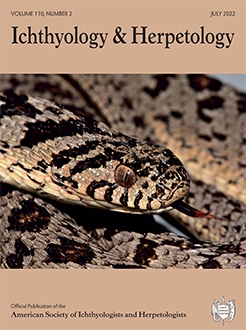Hemipenial characteristics have historically provided a wealth of comparative morphological characters for the systematic classification of snakes. However, the organs remain poorly known in many groups, particularly tropical and burrowing lineages. Here, we report on hemipenial morphology for 12 species from five genera from the family Uropeltidae: Melanophidium punctatum, M. cf. wynaudense, Plectrurus perrotetii, Rhinophis karinthandani, R. melanoleucus, R. saffragamus, R. sanguineus, Teretrurus cf. hewstoni, Uropeltis bhupathyi, U. cf. ceylanica, U. macrolepis, and U. rajendrani. Many are photographed or illustrated here for the first time. In Melanophidium, the organ is bulbous and mushroom-shaped, with the sulcus spermaticus winding through numerous convoluted folds. In Plectrurus and Teretrurus, it is simple, smooth, and conical. In Sri Lankan Rhinophis and some Uropeltis, the organ generally resembles previously described hemipenes from other species in those genera in being simple, subcylindrical, and covered in fine spines. However, a median lobular process is observed in the Indian species R. karinthandani, R. melanoleucus, and R. sanguineus, seemingly representing a novel bilobate morphology. One species, U. bhupathyi, exhibits a novel, bulbous morphology, but this may be an artifact of preservation. The hemipenes of the Uropeltidae and their sister group Cylindrophiidae resemble some typhlopoid blindsnakes more than their henophidian relatives such as pythons and boas. Whether this is due to convergence related to microhabitat, a form of sexual selection unrelated to ecomorphology, or symplesiomorphy from an ancestral snake morphology is unclear. Gross hemipenial morphology can now serve to diagnose uropeltids to the genus level or species group, though more data and comparative series are needed to determine whether other characters, such as the number and location of spines, can potentially differentiate taxa at finer scales.
How to translate text using browser tools
20 May 2022
First Report of Hemipenial Variation among Some Genera and Species of Shieldtail Snakes (Serpentes: Uropeltidae) from India and Sri Lanka
R. Alexander Pyron,
Vivek P. Cyriac,
S. R. Ganesh,
Ashok K. Mallik,
Anslem de Silva,
Achyuthan N. Srikanthan,
Kartik Shanker
ACCESS THE FULL ARTICLE

Ichthyology & Herpetology
Vol. 110 • No. 2
July 2022
Vol. 110 • No. 2
July 2022




